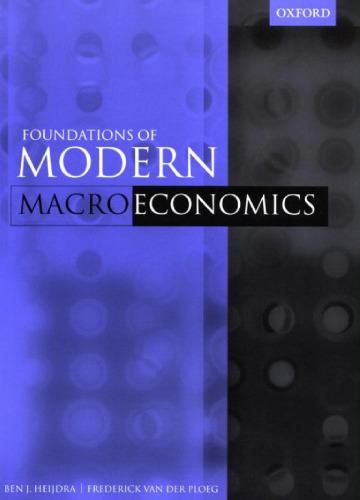Up to this point we have always assumed that r = r* under perfect capital mobility, -
Question:
Up to this point we have always assumed that r = r* under perfect capital mobility,
- hich would be correct if investors never expect the exchange rate to change. Whilst this may be reasonable under a (tenable) fixed exchange rate regime, it is a somewhat inconsistent assumption to make about investors' expectations in a regime of freely flexible exchange rates. Investors know that the exchange rate can (and generally will) fluctuate, and consequently will form expectations about the change in the exchange rate. The seminal contribution by Dornbusch (1976) was to introduce the assumption of perfect foresight (the deterministic counterpart to rational expectations; see Chapters 1 and 3) into a model of a small open economy facing perfect capital mobility and sticky prices. The model is summarized in Table 11.5.
Equations (T5.1) and (T5.2) are, respectively, the IS curve and the LM curve for a small open economy. Uncovered interest parity is given in equation (T5.3) and equation (T5.4) is the Phillips curve. If output is higher than its full employment level y, prices gradually adjust to eliminate Okun's gap. The adjustment speed of the price level is finite, due to the assumption of sticky prices. This means in formal terms that 0 < < oo. Finally, equation (T5.5) represents the assumption of perfect foresight. Agents' expectations regarding the path of the exchange rate coincide with the actual path of the exchange rate.
The model exhibits long-run monetary neutrality, as --- 0 implies that y =
and e = 0 implies that r = r*, so that (T5.2) shows that m — p is constant. In the long run, the domestic price level and the nominal money supply move together.
Furthermore, there is also a unique equilibrium real exchange rate, defined by (T5.1)
with y = y and r = r* substituted. This equilibrium exchange rate is not affected Table 11.5. The Dornbusch Model y= —EyRr +EyQ [p* + e — P]+ EYGg, (T5.1)
m p = + EMYY, (T5.2)
r = r* + ëe, (T5.3)
= [Y — Y (T5.4)
ee =
e. (T5.5)
AEe E0 (11.69)
297 EMEYQ EMR EME YR OEMRCYQ 0(EYR EMREYQ)
EMR EMEYR EMR EMEYR -
EmEmp EMEYGg m *
EMR EMEYR 0[EMREYQP* EMRE YGg + EYRmI EMR + EMEYR L PJ [eld
(11.74)
e eo Figure 11:
arrows in Figure 11.16
(11.74) implies:
4
—ae = EMY E ae EMR ± ES!
which shows that the .
the economy in the set dampened, accord i n The p = 0 line is obi it for e as a function ,
( e + p* = E YR ± E Along the p = 0 line ti an increase in the dorn store full employi:. _ right of the p = 0 domestic price level i•
The dynamic for, arrows in Figure 11.16 e real side of the 11.1/4,
= CEYR ap ) Emit+
1 — EMEYQ EMR EMEYR A ne long-run steady-st so that both r = r*
Step by Step Answer:

Foundations Of Modern Macroeconomics
ISBN: 9781264857937
1st Edition
Authors: Ben J. Heijdra, Frederick Van Der Ploeg






